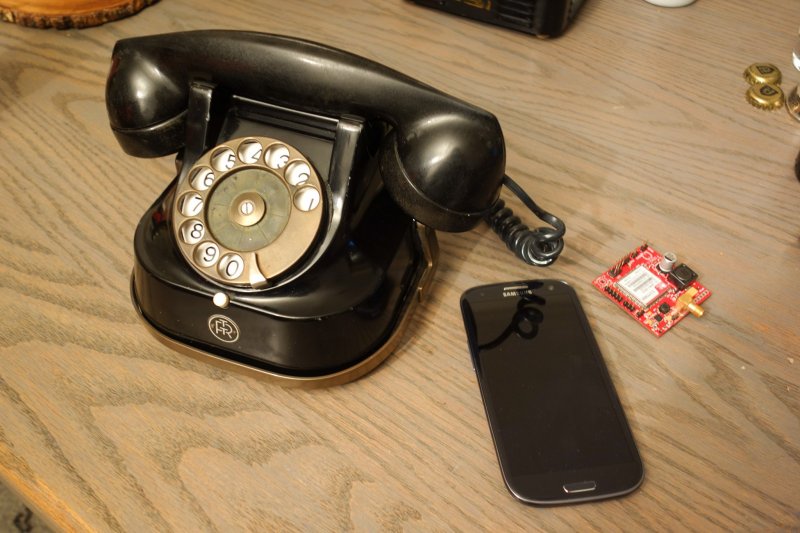Sometimes, the answer to, “Why would you bother with a project like that?” is just as simple as, “Because it’s cool.” We suspect that was the motivation behind [Dirk-Jan]’s project to make portable versions of classic rotary telephones.
On style points alone, [Dirk-Jan] scores big. The mid-1950s vintage Belgian RTT model 56 phone has wonderful lines in its Bakelite case and handset and a really cool flip-up bail to carry it around, making it a great choice for a portable. The guts of the phone were replaced with a SIM900 GSM module coupled with a PIC microcontroller and an H-bridge to drive the ringer solenoids, along with a Li-ion battery and charger to keep it totally wireless – except for the original handset cord, of course. The video after the break show the phone in action both making and receiving calls; there’s something pleasing on a very basic level about the sound of a dial tone and the gentle ringing of the bell. And it may be slow, but a rotary dial has plenty of tactile appeal too.
Rotary-to-cell conversions are a popular “just because” project, like this conversion designed to allow an angry slam-down of the handset. The orange Siemens phone in that project is nice and all, but we really favor the ’50s look for a portable.















“Because i can” would also be a valid answer…
Well having crushed two smart phones in my pocket I can see the appeal of this.
True, you will never be able to crush this phone IN YOUR POCKET :-)
Basically because it would not fit in it.
Didn’t Sparkfun do this like 5 years ago?
https://www.sparkfun.com/products/retired/287
That’s right, I definitely won’t pretend being the first one to do this :)
Although my very first (Siemens M35-based) prototype was before Sparkfun’s Port-o-rotary, over time I incorporated some of their ideas (I mention this in my hackaday.io post, but maybe this should be more pronounced). I adopted the 50V ringer circuit, but with a different H-bridge, since the NJM ones are impossible to source nowadays, and the audio interfacing / dial tone insertion.
Other differences are the board size (5x5cm to fit into compact phones such as the first one in the video), different LiPo charger, different modem (SIM900) and battery sensing by the microcontroller.
Somewhere in a box of stuff I still have my first cell phone, an old Motorola analog bag phone. For a while now I have been tempted to do something similar with it. But my plan was to gut the electronics in the bag part and wire in a Bluetooth headset and just have it connect to my smartphone. It would look like I was using an old bag phone but it would be working through my smartphone. Another project I never get to. The other problem is that I find it hard to “repurpose” old electronics of mine into other projects, even if the item is no longer useful to anyone.
Google bluetooth dialer.
Gut, insert into classic mobile.
Leave your smart phone in pocket.
Make and answer calls inc address book in retro !!
Makes perfect sense of course. Logical next step: hack the same hardware into a full-size 101-key qwerty keyboard – apparently, that’s what it takes to have a phone with a *usable* keyboard these days…
If you think life is hard today, try texting on a rotary.
You had a rotary? I only had two pigeons and some parchment!
Use the hook switch as a telegraph key. Morse code is the original way they texted.